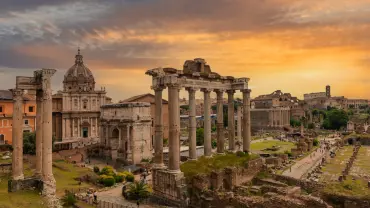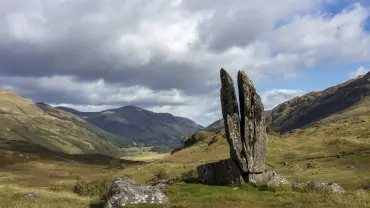For centuries, the tantalising allure of undiscovered treasure has captivated the human imagination. One such mythic tale is that of the Seven Cities of Gold, also known as Cibola. Whether fact or fable, the tale of these golden cities remains one of the most enduring and enchanting mysteries of the New World.
Originating from ancient Iberian legends and brought to life by Spanish explorers’ dreams of vast wealth, the legend of the Seven Cities of Gold became a beacon for those seeking fame, fortune, and a place in history.
By the sixteenth century, the Seven Cities of Gold were thought by many to exist somewhere in the unexplored territories of North America, and they were collectively known as Cibola. Each city was said to be richer than the last, with streets paved in gold and houses adorned with precious jewels. Yet, despite the many setbacks and the elusiveness of these alleged golden cities, their legend persists to this day. Is Cibola real? Is there a lost city of gold, a real-life El Dorado, just waiting to be discovered?
These, and many other questions about an ancient golden city add to the intrigue surrounding Cibola. Let’s voyage to the New World in an effort to shed light on this ancient auric enigma.
The Age of Discovery

Portolan Map during the Age of Discovery (Credit: Universal History Archive/ Universal Images Group via Getty Images)
As dusk settled on the Middle Ages and the fifteenth century dawned, Europe was on the cusp of a transformative era. It was the Age of Discovery. Driven by scientific curiosity, religious zeal, and the promise of unprecedented wealth, European powers embarked on ambitious maritime expeditions that charted unknown territories and established new sea routes. At the forefront of this age were Spain and Portugal, who poured huge resources into the building of vast naval fleets. They financed intrepid explorers who promised to write new chapters in world history. Some did, and others were resigned as footnotes.
This fervent period of exploration and conquest laid the foundation for the tales of the seven golden cities. As Spanish and Portuguese caravels returned from their voyages, they brought back with them not just exotic goods and newfound territories, but also captivating tales of vast civilisations and untold riches in the New World. These tales fueled the European imagination, creating an atmosphere ripe for legends like Cibola to flourish. Indeed, the drive to discover and the allure of potential wealth became deeply intertwined, with the Seven Cities of Gold serving as a bejewelled beacon for explorers hoping to make their mark during this monumental age.
As the Age of Discovery unfolded, it amplified and propelled myths like that of Cibola and the Lost City of Gold. This fervour and ambition turned these legends into powerful motivators, pushing explorers further into uncharted lands in their relentless quest for the next great discovery.
The Narvaez Expedition

Cabeza de Vaca, a survivors of the ill-fated Narvaez Expedition (Credit: MPI via Getty Images)
Following in the footsteps of Spanish conquistador Hernán Cortés who brought about the fall of the mighty Aztec Empire and returned with their gold, the Narváez Expedition set out in 1527 with high hopes of conquest and discovery in the New World. Inspired by tales of immense wealth and an ancient gold city like the mythical Cíbola, Pánfilo de Narváez led an expedition of around six hundred men and women, the official purpose of which was to establish Spanish settlements along the Gulf Coast in what is today the southeastern United States. Unofficially, they were on the hunt for a city of gold.
However, the expedition quickly turned catastrophic. Plagued by a series of misfortunes, including fierce storms, hostile indigenous tribes, and a lack of supplies, the expedition began to falter. In a desperate attempt to find a way out, they built makeshift rafts to sail west along the Gulf Coast. Narváez himself disappeared during this journey and was never seen again.
Of the six hundred or so who set out in 1527 on the hunt for these legendary golden cities, by the early 1530s just four men remained. Álvar Núñez Cabeza de Vaca, Alonso del Castillo Maldonado, Andrés Dorantes de Carranza, and a Moroccan named Estevanico (or Esteban the Moor). They spent roughly eight years wandering the southwestern parts of what is today the United States and northern Mexico. They found nothing.
When they returned to the Spanish colonial settlements of Culiacán – modern-day Sinaloa – in 1536, and later Mexico City, their tales of encounters with indigenous tribes and rumours of wealthy cities in the interior (not based on first-hand knowledge but largely on hearsay from natives they encountered) fuelled further interest in exploration.
The Search for Gold Continues…

Coronado Heights, Kansas. Where Coronado gave up his search for gold (Credit: Harvey Meston via Getty Images)
In 1539, a Franciscan friar named Marco da Nizza (sometimes spelt ‘de Niza’) reached the town of Zuni Pueblo in modern-day New Mexico and claimed to have seen one such city of gold from a distance. Other versions of the story suggest da Nizza didn’t see the city himself, rather he relied on reports from others.
A year later, conquistador Francisco Vásquez de Coronado arrived there expecting to be dazzled by buildings made of gold and bedecked in jewels, however all he found were mudbrick villages.
Undeterred, a local whom Coronado named simply ‘The Turk’ told him there was a city of great wealth on the other side of the Great Plains, called Quivira. Believed to be the ancestral home of the Wichita people and possibly somewhere in modern-day Kansas, Nebraska or Missouri, Coronado and his party – said to consist of three hundred soldiers, over a thousand natives and a vast train laden with enormous amounts of food and huge herds of extra horses – set out with high hopes. Indeed it seems he was so sure of finding the lost city of gold it’s believed he funded the trip himself.
Again, he was disappointed. They found an indigenous people quietly living in straw-thatched villages.
One version of the story suggests that Coronado confronted ‘The Turk’ who admitted he had lied about the ancient gold city. Disgraced and bankrupt, Coronado returned to New Spain where he lived in obscurity for the rest of his life.
The Seven Cities of Gold

Gran Quivira Ruins, Salinas Pueblo Missions National Monument, New Mexico (Credit: Melissa Kopka via Getty Images)
While seven cities are often cited, the number seven in this context doesn’t necessarily signify a specific number. Instead, seven in mediaeval lore often represented a symbolic or mystical value signifying abundance or plenty.
In addition, there isn’t a list of seven golden cities that all sources can agree on and their names and locations vary depending on the storyteller or source. Various names are mentioned in the different versions of the story including the previously mentioned Cibola and Quivira, as well as Gran Quivira, Totonteac, Tiguex, Aixa and Awatovi or Hakitzu.
Such was the conquistadors’ lust for wealth, it’s said that during the sixteenth and seventeenth centuries, dozens of expeditions specifically set out in search of the Seven Cities of Gold. All of which accomplished nothing.
Fool’s Gold

Closeup of big gold nugget on a black background. (Credit: bodnarchuk via Getty Images)
The pursuit of the golden cities stands as a vivid testament to the power of myth, ambition, and human avarice. From ancient Iberian tales to the desperate explorations of Spanish conquistadors, the allure of undiscovered riches proved irresistible.
Yet, as history has shown, these cities of gold remain ever elusive. The expeditions were not based on verified accounts but rather on a mixture of indigenous hearsay, misinterpretations, and outright fabrications. The relentless quest was driven more by greed and the intoxicating allure of the unknown than by any genuine evidence.
Yet the legend of the Seven Cities of Gold serves as a cautionary tale, a reminder of the lengths humankind is prepared to go based on whispers and half-truths.












